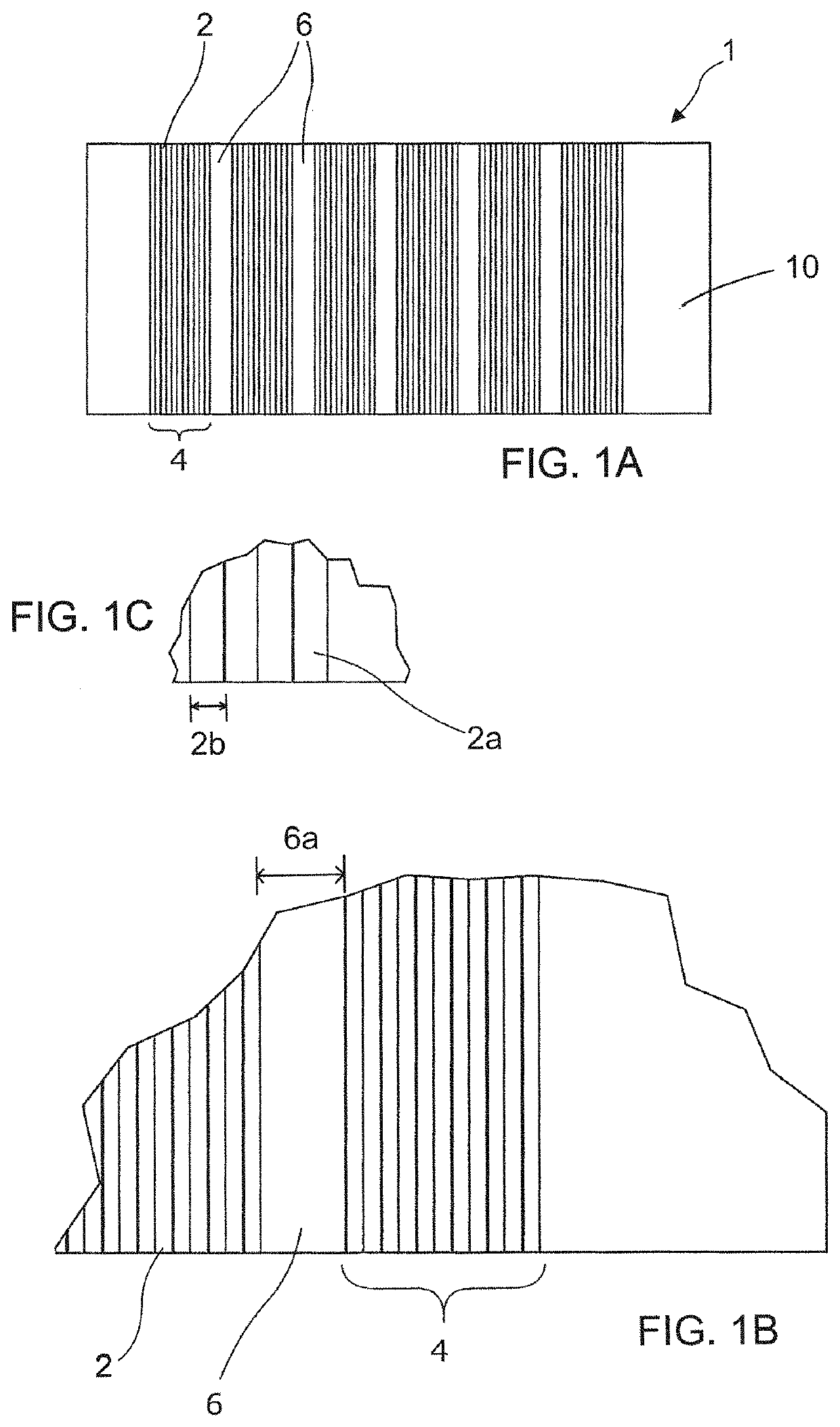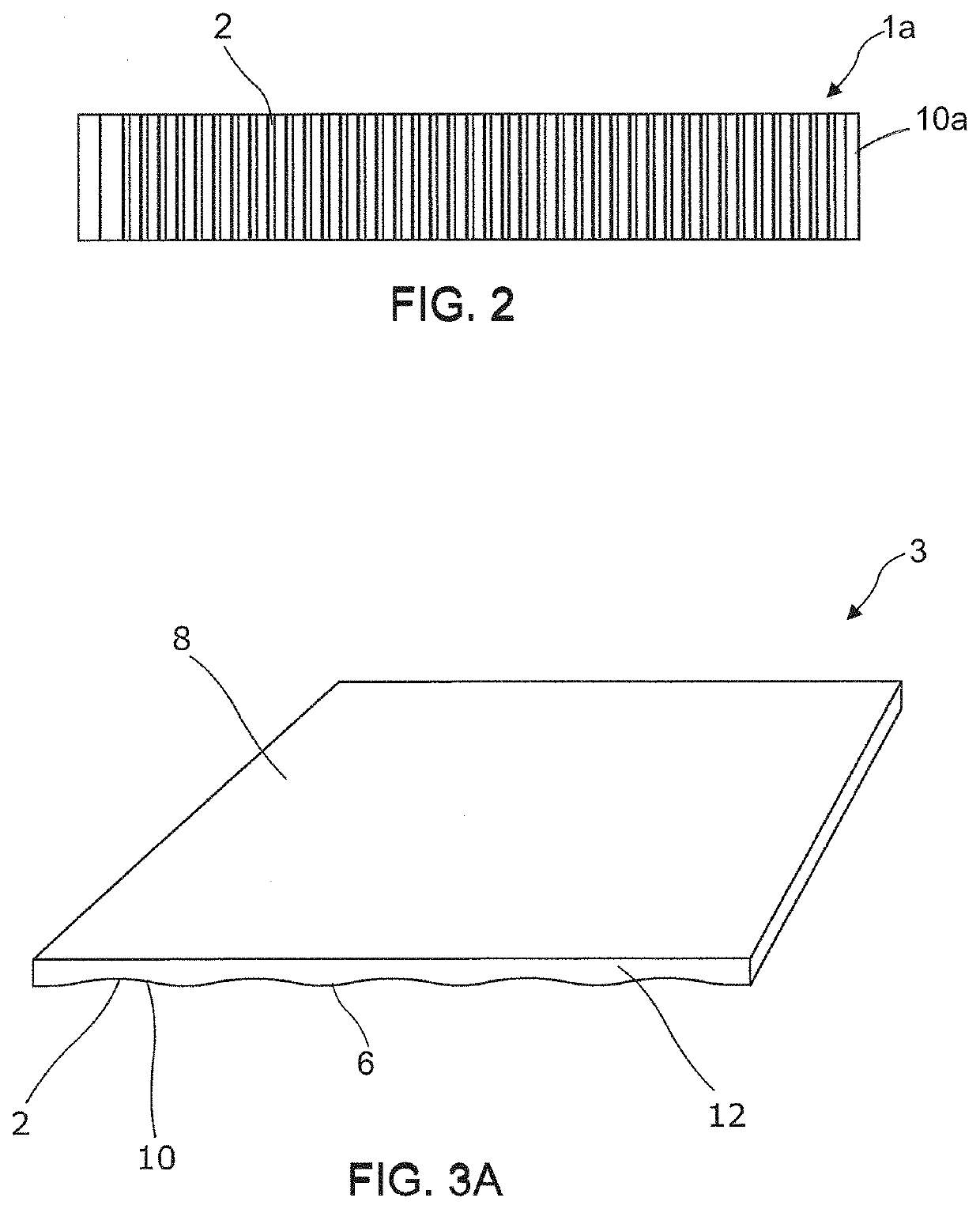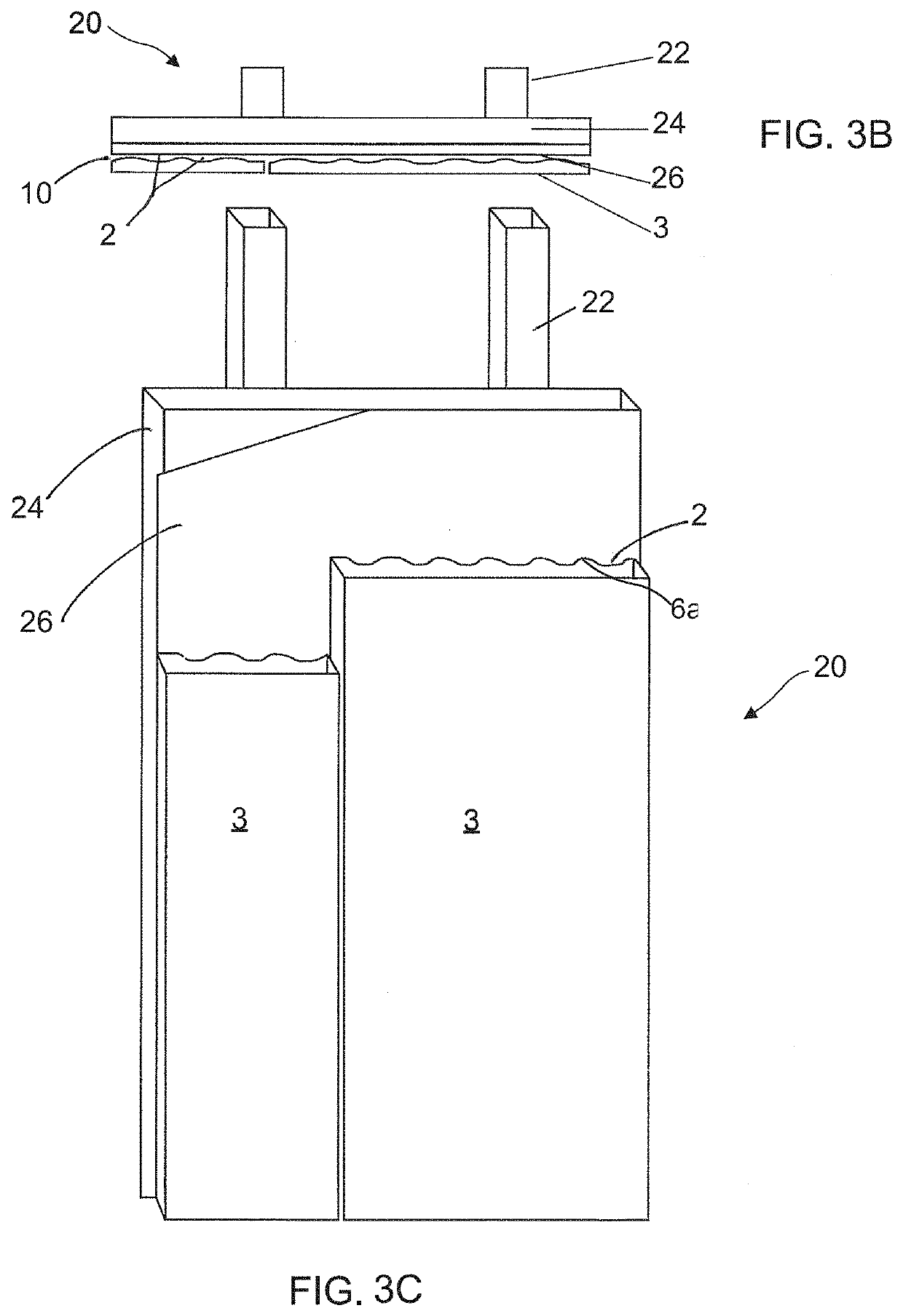[0031]One advantage of the cementitious building articles disclosed herein is that the design and position of the drainage channels allow the cementitious building article to be installed onto a structural building frame without the need for furring strips. The integrally formed drainage channels are designed to facilitate drainage and ventilation thereby providing a rain screen system which is easier and cheaper to install than current systems. The configuration and arrangement of the drainage channel are selected to improve the drainage efficiency while at the same time simplify installation process of the building article.
[0034]In some embodiments, the integrally waterproof fiber cement composite material formulation includes approximately 0.5% by weight of silica fume. In some embodiments, the integrally waterproof fiber cement composite material can be an interior board for a building structure or an exterior cladding such as siding. In some embodiments, the integrally waterproof fiber cement composite material is sufficiently waterproof to prevent droplet formation when exposed to hydrostatic pressure from a 2″ wide×20″ tall column of water for 48 hours. For example, the integrally waterproof fiber cement composite material may pass the ASTM D4068 hydrostatic pressure test (e.g., the ASTM D4068-17 version, revised in 2017).
[0036]In some embodiments, the silica fume comprises approximately 0.5% of the dry weight of the material formulation. In some embodiments, the sizing agent comprises a silanol solution. In some embodiments, the silanol solution comprises a dispersant. In some embodiments, the dry weight of the sizing agent is approximately 0.5% of the weight of the cellulose fibers. In some embodiments, the integrally waterproof fiber cement composite material formulation further comprises a density modifier. In some embodiments, the density modifier comprises perlite and / or calcium silicate. In some embodiments, the integrally waterproof fiber cement composite material is sufficiently waterproof to prevent droplet formation when exposed to hydrostatic pressure from a 2″ wide×20″ tall column of water for 48 hours. For example, the integrally waterproof fiber cement composite material may pass the ASTM D4068 hydrostatic pressure test (e.g., the ASTM D4068-17 version, revised in 2017).
[0037]In other embodiments, a method of manufacturing an integrally waterproof fiber cement composite material comprises mixing cellulose fibers with a diluted silanol solution, wherein the silanol solution comprises an amount of silanol between 0.25% and 2% of the dry weight of the cellulose fibers; preparing a formulation comprising a cementitious hydraulic binder and silica; adding to the formulation the mixed cellulose fibers and silanol solution; adding to the formulation a relatively small quantity of silica fume, wherein the silica fume comprises between 0.25% and 2% of the dry weight of the formulation; and curing the formulation for a time sufficient to cause the material to set.
[0040]In some embodiments, the silanol in the diluted pre-dispersed solution have a dry weight equal to approximately 0.5% of the dry weight of the cellulose fibers. In some embodiments, the integrally waterproof fiber cement composite material includes approximately 0.5% by weight of silica fume. In some embodiments, the integrally waterproof fiber cement composite material is an interior board or an exterior cladding. In some embodiments, the integrally waterproof fiber cement composite material is sufficiently waterproof to prevent droplet formation when exposed to hydrostatic pressure from a 2″ wide×20″ tall column of water for 48 hours and meets the criteria of the ASTM D4068 hydrostatic pressure test (e.g., the ASTM D4068-17 version, revised in 2017).
[0041]In some embodiments, the present disclosure provides various fiber cement composite articles that include counterfeit detection features including pigmented layers disposed between adjacent laminated layers of fiber cement material. The counterfeit detection features disclosed herein provide a number of advantageous and unexpected features. For example, the pigmented layers may be applied in solution in a liquid carrier without bleeding into the adjacent fiber cement layers, regardless of whether the pigment solution is applied to wet (uncured) or dry (cured) fiber cement. In another example unexpected advantage, the pigmented layers may be invisible at the edges of a fiber cement article when the article is cut by water jet cutting, but may be visible at the edges of the article when the article is cut by a saw.
 Login to View More
Login to View More  Login to View More
Login to View More 


